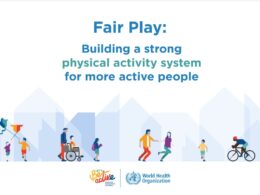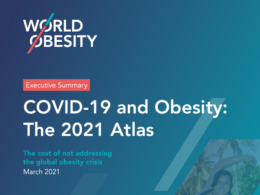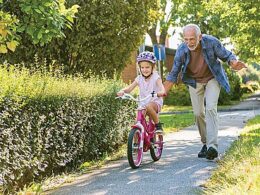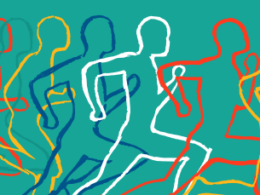The Lancet — Regional Health, Western Pacific
Anne Tiedemann, Cathie Sherrington, Adrian Bauman, Ding Ding
July 16, 2022, cdc
Site version edited by:
Joaquim Cardoso MSc.
Transforming Health — Research and Advisory Institute
Preventive Health Unit, Physical Activity
May 19, 2022
The United Nations (UN) Decade of Healthy Ageing (2021–2030) shines a spotlight on Improving the lives of older people, their families, and communities.
Rapid demographic ageing across the Western Pacific Region provides a catalyst for urgent action to promote age-friendly environments, combat ageism, and ensure older people have access to essential health services, disease prevention and health promotion-all within the context of sustainable development.
The Western Pacific Region has one of the world’s largest, fastest-growing older populations, being home to 240 million people aged 65+, one-third of the global population in this age group.
By 2060, this number is predicted to double and the proportion of the region’s people aged 65+ is expected to rise from 12% to 28%.
Physical activity is of utmost importance to health across the lifecourse, yet insufficient activity is common among many Western Pacific Region countries.
Additional efforts are needed to promote physical activity, particularly in older age, since older age tends to be associated with reduced activity.
This public health priority demands urgent action from decision makers worldwide, but particularly in our region.
Given our diversity in ethnicities, cultures, climate and geography, physical activity opportunities need to meet local needs, capacity and affordability.
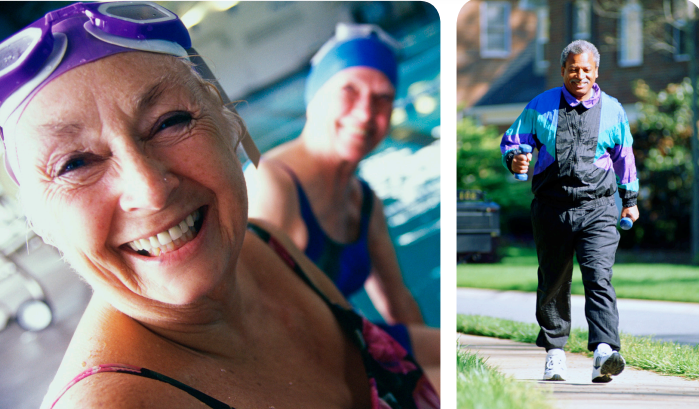
The World Health Organization’s (WHO) 2020 Guidelines on Physical Activity and Sedentary Behaviour recommend older adults:
- Do at least 150–300 min of moderate-intensity aerobic physical activity; or at least 75–150 min of vigorous-intensity aerobic physical activity; or an equivalent combination of moderate- and vigorous-intensity activity throughout the week.
- Do muscle-strengthening activities at moderate or greater intensity on two or more days a week.
- As part of weekly physical activity, do varied multicomponent physical activity emphasizing functional balance and strength training at moderate or greater intensity, on three or more days a week, to enhance functional capacity and prevent falls.
Alongside these specific thresholds, the WHO Guidelines highlight the evidence that every move counts and that replacing no physical activity with even low intensity physical activity provides health benefits.
We must ensure clear communication that even if older adults are unable to reach the recommended thresholds of physical activity, they can gain benefits from doing any amount of activity.
Older adults should be encouraged to choose activities they enjoy and can access. Many different types of physical activity have proven benefits for older adults.
WHO’s Global Action Plan on Physical Activity (GAPPA) provides a policy framework for achieving a 15% relative reduction in the prevalence of physical inactivity by 2030.
GAPPA’s 20 recommended policy actions address the social, cultural, environmental and individual determinants of physical inactivity.
Most of GAPPA’s policy action areas specifically consider the needs of older adults, including calls for ‘age-friendly planning’ and ‘tailored programs and services for older adults’.
But the challenge is moving from recommendations to implemented population-level programs and strategies.
Concerted efforts are needed to avoid ageism in communication about and promotion of physical activity.
Recognition of diverse abilities, attitudes and preferences that accompany the different stages of ageing is achieved with positive images, inclusive language and physical activities that are modified to cater for impaired function as well as mainstream physical activities.
This region’s diversity, in terms of cultural values, development, technology and transport, requires participatory approaches so the needs of all older people are considered.
The benefits of physical activity go well beyond the prevention of negative outcomes, such as chronic disease, ill health, and early death.
Physical activity should be emphasized for its ability to enhance mental wellbeing, social connection, independence, and quality of life, and for its contribution to the UN sustainable development goals, particularly to climate action, through active transport.
For decision makers, to achieve significant, sustained improvement of physical activity among older adults, we need a system-wide approach, that considers individual, structural and environmental enablers and barriers.
Older adults need to feel safe and welcomed, be confident their needs and preferences are considered, and that they have the capacity to participate in physical activity.
Service providers should recognize older people’s diverse functional abilities, needs, and preferences at different stages of ageing.
Our towns and cities should become age-friendly and society must support the notion that being physically active throughout life is a basic human right.
Getting the region moving is a multisectoral responsibility, requiring solutions from within and beyond the health sector.
The specific needs of older adults should be understood, considered, and addressed to enable our diverse ageing regional populations to live longer with access to physical activity that enhances function, health, and quality of life.
References
- United Nations decade of healthy ageing. https://www.who.int/initiatives/decade-of-healthy-ageing. Accessed 29 April 2022.
2.Salvo D Garcia L Reis RS et al.
Physical activity promotion and the United Nations sustainable development goals: building synergies to maximize impact.
J Phys Activity Health. 2021; 18: 1163–1180
3.World Health Organization Regional Office for the Western Pacific Manilla. Regional action plan on healthy ageing in the Western Pacific. 2020.
4.World Health Organization Regional Office for Europe. Promoting healthy ageing in the Western Pacific region. Implications for health expenditure trends and economic growth. 2021.
5.Saint-Maurice PF Coughlan D Kelly SP et al.
Association of leisure-time physical activity across the adult life course with all-cause and cause-specific mortality.
JAMA Netw Open. 2019; 2e190355
6.Macniven R Bauman A Abouzeid M.
A review of population-based prevalence studies of physical activity in adults in the Asia-Pacific region.
BMC Public Health. 2012; 12: 41
7.Australian Institute of Health and Welfare. Australia’s health 2020. Canberra 2021.
8.Bull FC Al-Ansari SS Biddle S et al.
World health organization 2020 guidelines on physical activity and sedentary behavior.
Br J Sports Med. 2020; 54: 1451–1462
9.Taylor J Walsh S Kwok W et al.
A scoping review of physical activity interventions for older adults.
Int J Behav Nutr Phys Activity. 2021; 18: 82
10.World Health Organization. Global action plan on physical activity 2018–2030: more active people for a healthier world. Geneva 2018.
Additional information
See the original publication
Originally published at https://www.thelancet.com.
About the authors & affiliations:
Anne Tiedemann, a *
Cathie Sherrington ,a
Adrian Bauman ,b and
Ding Ding b
a Institute for Musculoskeletal Health,
The University of Sydney and Sydney Local Health District, Camperdown, NSW 2050, Australia
b Charles Perkins Centre, Sydney School of Public Health, Faculty of Medicine and Health,
The University of Sydney, NSW 2006, Australia






